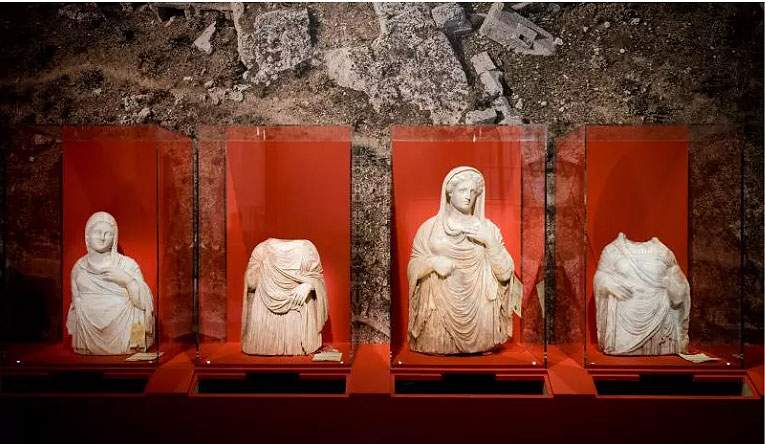The Louvre against illicit trafficking: sculptures from Libya and Syria on display
The Louvre is presenting until December 13, 2021, four funerary statues from Cyrene in eastern Libya, which were seized in France when they were about to be illegally exported, and two reliefs with Byzantine decoration presumably from Syria. The display of these sculptures is intended to sensibize the public about the illicit trade in cultural property.
The funerary statues that come from Cyrene, among the largest ancient cities in North Africa that gave its name to the eastern region of Libya, Cyrenaica, and an important archaeological site for the study of Greco-Roman culture, belong to a set of busts and half-statues, representing mostly female figures, that were looted from necropolises in this region. They originate from ancestral traditions, probably from the union of Greek and Libyan cultures, and are associated with portraits of the deceased. They are typical sculptures from the necropolises of the Greek city of Cyrene, which is why it was possible to locate and seize them as they passed through France in order to help protect Libyan heritage. Also displayed in the same way are two highly decorated marble slabs, possibly from Syria and seized for the same reasons. When the ongoing legal proceedings are completed, these works will return to their countries of origin.
Since the 1980s, Cyrenaica has been threatened by uncontrolled urbanization that has accelerated since the Arab Spring (2011), amid land grabbing and construction without permits. This is also compounded by an unprecedented increase in targeted looting of graves. Today, government agencies are collaborating to counter trafficking in conflict zones. Libya and the Middle East are particularly affected by the illicit trafficking of cultural goods, such as the sculptures seized after the 2011 “Arab Spring” by French customs and police. In the face of destruction, looting and theft, the extent of damage to cultural heritage in the Middle East cannot be ignored or underestimated. The moon-like appearance of the looted sites in Syria or Iraq, the subsequent destruction of the Mosul museum and the city of Palmyra are a perfect testimony to this.
image © French Customs / Patrice Pontié
 |
| The Louvre against illicit trafficking: sculptures from Libya and Syria on display |
Warning: the translation into English of the original Italian article was created using automatic tools. We undertake to review all articles, but we do not guarantee the total absence of inaccuracies in the translation due to the program. You can find the original by clicking on the ITA button. If you find any mistake,please contact us.




























